The allure of the Monstera plant lies in its striking, glossy leaves and its ability to transform any space into a lush, tropical oasis.
To unlock the full potential of this botanical wonder, it’s crucial to understand the role of fertilizer in its growth and development.
In this in-depth guide, we will explore everything you need to know about Monstera fertilizer, from the basics to advanced techniques, ensuring your Monstera thrives and flourishes.

Understanding the Monstera Deliciosa
Anatomy of a Monstera
Before diving into the world of fertilizers, it’s crucial to comprehend the Monstera plant’s basic structure.
Understanding its leaves, stems, and root system will provide invaluable insights into its nutrient requirements.
The Monstera Deliciosa boasts large, heart-shaped leaves with distinctive splits and perforations, often earning it the nickname “Swiss Cheese Plant.”
Its aerial roots, which can develop in humid conditions, contribute to its unique appearance.
Native Habitat and Growth Conditions
Native to the tropical rainforests of Central and South America, Monstera Deliciosa thrives in a warm, humid environment with dappled sunlight. Replicating these conditions is key to its successful cultivation.
Why Fertilizer Matters
In its natural habitat, Monstera plants have access to a rich array of nutrients from the forest floor.
To mimic this environment in a home setting, providing the right balance of nutrients through fertilizer is essential.
Read: Monstera Pinnatipartita: Care, Propagation, Challenges, & All.
Essential Nutrients for Monstera Growth
Ensuring your Monstera receives the right balance of nutrients is crucial for its overall health and vitality.
Let’s explore the primary macronutrients, micronutrients, and secondary nutrients that play vital roles in the growth and development of your Monstera plant.
Macronutrients: N-P-K Ratio
The cornerstone of any successful fertilizer regimen lies in understanding the N-P-K ratio, which represents the three primary macronutrients: Nitrogen (N), Phosphorus (P), and Potassium (K).
- Nitrogen (N): This nutrient is responsible for promoting lush, green foliage. It’s a crucial component of chlorophyll, the compound that enables plants to photosynthesize. Adequate nitrogen ensures vigorous leaf development and overall plant vitality.
- Phosphorus (P): Phosphorus is instrumental in root development and flowering. It facilitates energy transfer within the plant, essential for robust root systems and the production of vibrant blooms. When Monstera plants enter their flowering phase, an ample supply of phosphorus is critical for optimal results.
- Potassium (K): Often referred to as the ‘quality nutrient’, potassium contributes to the overall health and structure of the plant. It aids in disease resistance, drought tolerance, and the regulation of various physiological processes.
Micronutrients: The Unsung Heroes
While required in smaller quantities, micronutrients are just as indispensable for Monstera growth.
- Iron (Fe): Essential for chlorophyll production and overall energy metabolism, iron ensures your Monstera’s leaves remain vibrant and healthy.
- Magnesium (Mg): This micronutrient plays a central role in photosynthesis, helping convert sunlight into energy. It also supports enzyme activation and the synthesis of essential compounds.
- Zinc (Zn): Zinc is involved in numerous enzymatic reactions crucial for plant development. It influences processes such as hormone regulation, root development, and overall growth.
Secondary Nutrients: The Supporting Cast
Although required in smaller quantities compared to macronutrients, secondary nutrients are no less important for healthy Monstera growth.
- Calcium (Ca): Vital for cell wall development, calcium ensures the structural integrity of your Monstera. It’s particularly important during rapid growth phases.
- Sulfur (S): Sulfur aids in the formation of amino acids and proteins, essential building blocks for healthy plant growth.
- Magnesium (Mg): Though classified as both a secondary nutrient and a micronutrient, its importance cannot be overstated. It’s a critical component of chlorophyll, crucial for photosynthesis.
By providing your Monstera with a well-balanced fertilizer that includes these essential nutrients, you’re setting the foundation for robust growth and a thriving, vibrant plant. Remember to monitor your plant’s progress and adjust your fertilization routine as needed, ensuring it receives the optimal nutrition it requires.
Read: Monstera Fruit: Care, How to Eat, Taste, Benefits & All.
Types of Fertilizer
Choosing the right type of fertilizer is a pivotal decision in ensuring your Monstera receives the nutrients it needs to thrive.
Let’s explore the various options available, considering both their composition and application methods.
1. Organic vs. Synthetic Fertilizer
Organic Fertilizer:
Organic fertilizers are derived from natural sources, such as compost, manure, bone meal, and other organic materials.
They offer a holistic approach to plant nutrition, enriching the soil with a diverse range of nutrients.
Organic fertilizers also improve soil structure and foster beneficial microbial activity, creating a more sustainable and eco-friendly gardening environment.
Read: 10 Best Soil for Monstera Plants.
Synthetic Fertilizer:
Synthetic, or chemical, fertilizers are formulated with precise nutrient ratios and are readily available for immediate plant uptake.
They are typically more concentrated and can provide a quick nutrient boost.
However, they may not contribute to long-term soil health and may require more cautious application to prevent over-fertilization.
2. Slow-Release vs. Liquid Fertilizer
Slow-Release Fertilizer:
Slow-release fertilizers are designed to gradually release nutrients over an extended period, providing a steady supply to the plant.
These granular formulations are ideal for long-term plant health, as they reduce the risk of over-fertilization and ensure a consistent nutrient supply.
They are particularly convenient for busy gardeners who prefer less frequent applications.
Liquid Fertilizer:
Liquid fertilizers are fast-acting solutions that are dissolved in water and applied directly to the soil or foliage. They offer a quick nutrient boost and are easily absorbed by the plant’s roots.
Liquid fertilizers are versatile and can be adjusted for specific nutrient requirements. However, they may necessitate more frequent application to maintain optimal nutrient levels.
3. Homemade Fertilizer: Pros and Cons
Creating your own fertilizer blends from household items can be a cost-effective and eco-friendly alternative. Common ingredients include compost, eggshells, coffee grounds, and other organic materials.
While homemade fertilizers can be tailored to suit your Monstera’s specific needs, it’s crucial to strike the right nutrient balance to avoid over or under-fertilizing.
Additionally, they may take time to decompose and release nutrients, requiring careful planning and patience.
When choosing the type of fertilizer for your Monstera, consider factors such as your gardening philosophy, lifestyle, and specific preferences. Each type has its merits, and the key lies in selecting the one that aligns best with your overall approach to plant care. Remember, regardless of the type chosen, always follow recommended application rates and guidelines to promote optimal plant health.
Read: Monstera Seeds: Germination, Caring, Collecting, & All.

Top 10 Fertilizers for Monstera Plants
1. Monstera Plant Food by Miracle-Gro
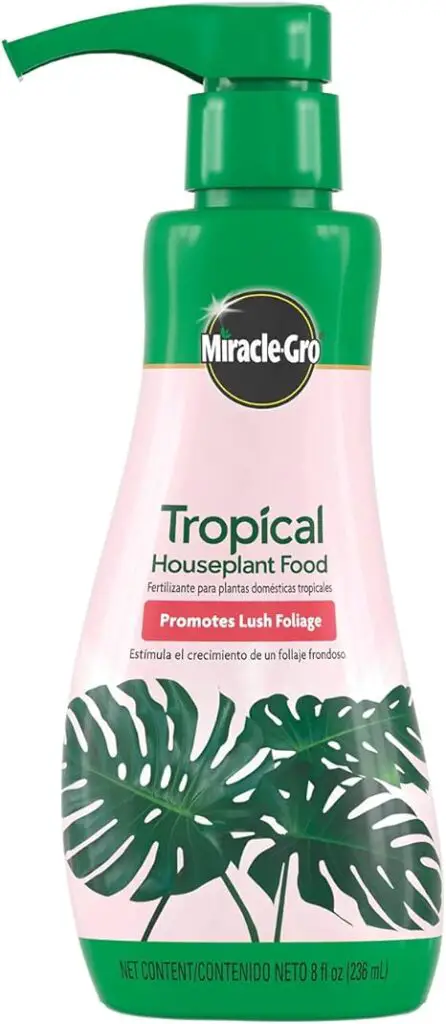
The Monstera Plant Food by Miracle-Gro is a specially formulated fertilizer designed to meet the specific nutrient needs of Monstera plants.
With its balanced blend of essential nutrients, this product has gained popularity among plant enthusiasts for its effectiveness in promoting healthy growth and vibrant foliage.
Key Features:
- Optimal Nutrient Balance: The fertilizer provides a balanced ratio of nitrogen (N), phosphorus (P), and potassium (K), with an NPK ratio of approximately 3:1:2. This ensures that your Monstera receives a well-rounded nutrient profile, supporting both foliage growth and root development.
- Easy Application: Using the Monstera Plant Food is straightforward. Simply mix 1 tablespoon of the fertilizer per gallon of water and use it to water your plant. This convenient application method ensures even distribution of nutrients to the root system.
- Tailored for Monstera Plants: The formulation is specifically designed to address the unique nutrient requirements of Monsteras, making it a reliable choice for enthusiasts seeking to optimize their plant’s health.
Benefits of Using Monstera Plant Food:
- Promotes Lush Foliage: The balanced nutrient profile, particularly the presence of nitrogen, facilitates the development of rich, green foliage, enhancing the overall visual appeal of your Monstera.
- Supports Root Growth: The phosphorus content in the fertilizer contributes to robust root development, providing a strong foundation for your plant’s overall health and stability.
- Convenient Application: The user-friendly application process ensures that even novice gardeners can effectively deliver the necessary nutrients to their Monstera plants.
Customer Feedback and Reviews:
Enthusiastic reviews from satisfied users highlight the noticeable improvements in their Monstera’s growth and appearance after incorporating the Monstera Plant Food into their care routine.
Many report enhanced foliage coloration and increased leaf production.
2. Jack’s Classic All-Purpose Fertilizer
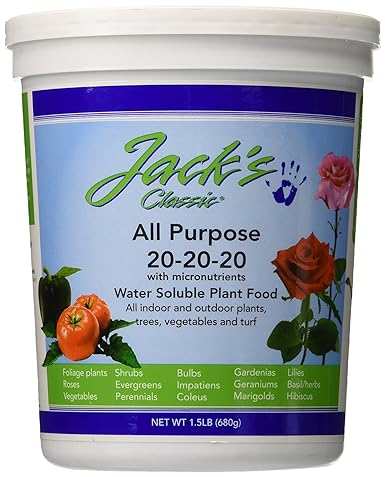
Jack’s Classic All-Purpose Fertilizer is a versatile and budget-friendly fertilizer known for its effectiveness in promoting healthy growth in various plants, including Monsteras.
This well-balanced fertilizer has gained popularity among gardeners for its affordability and reliability.
Key Features:
- Balanced Nutrient Profile: This fertilizer offers a balanced ratio of essential nutrients, including nitrogen (N), phosphorus (P), and potassium (K). With an NPK ratio tailored for all-purpose use, it provides a well-rounded nutrient supply to support plant growth.
- Affordability: Jack’s Classic All-Purpose Fertilizer is known for its cost-effectiveness, making it an excellent choice for budget-conscious gardeners without compromising on quality.
- Versatility: While suitable for a wide range of plants, including Monsteras, its balanced nutrient composition ensures it can be used effectively in various gardening applications.
Benefits of Using Jack’s Classic All-Purpose Fertilizer:
- Supports Overall Plant Health: The balanced nutrient profile aids in all aspects of plant development, from leafy growth to root establishment, contributing to overall plant vigor.
- Economical Choice: Its affordability makes it an attractive option for gardeners seeking a reliable, high-quality fertilizer without breaking the bank.
- Easy Application: Following the manufacturer’s instructions for application ensures a straightforward and hassle-free process, making it suitable for both novice and experienced gardeners.
Customer Feedback and Reviews:
Gardeners appreciate Jack’s Classic All-Purpose Fertilizer for its cost-effectiveness and consistent results. Many users report healthy, vibrant growth in their plants, with improved foliage coloration and overall vitality.
3. Espoma Organic Orchid Plant Food
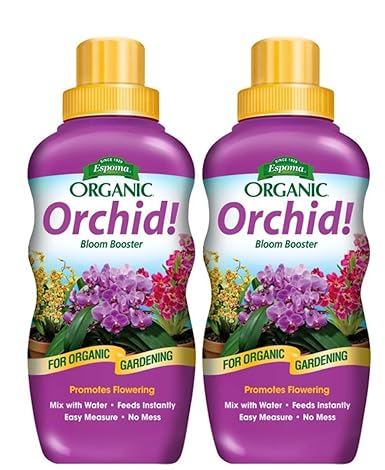
Espoma Organic Orchid Plant Food is a specialized fertilizer designed to meet the unique nutrient requirements of orchids and various plants like Monstera.
This organic formulation has gained popularity among Monstera enthusiasts for its natural and effective approach to Monstera care.
This fertilizer is also easy to use. Simply mix 1 teaspoon of fertilizer per gallon of water and water your plant as usual.
You can fertilize your Monstera every two weeks during the growing season (spring to fall) and once a month during the dormant season (winter).
Key Features:
- Organic: Organic fertilizers are made from natural materials, such as plant and animal waste, and are generally considered to be better for plants and the environment than synthetic fertilizers.
- NPK: Espoma Organic Orchid Plant Food has an NPK ratio of 1-3-1.
- Slow-release: Espoma Organic Orchid Plant Food is a slow-release fertilizer, which means that it releases nutrients to your plant over time. This is beneficial for Monsteras because it helps to prevent root burn and nutrient lockout.
- Beneficial microbes: Espoma Organic Orchid Plant Food contains beneficial microbes, which are tiny organisms that live in the soil and help to improve soil health and fertility. Beneficial microbes can also help to protect plants from pests and diseases.
Benefits of Using Espoma Organic Orchid Plant Food for Monsteras:
- Promotes healthy leaf growth: Monsteras are known for their large, beautiful leaves. Espoma Organic Orchid Plant Food can help to promote healthy leaf growth by providing your plant with the essential nutrients it needs.
- Encourages strong root development: A healthy root system is essential for a healthy Monstera plant. Espoma Organic Orchid Plant Food can help to encourage strong root development by providing your plant with the nutrients it needs to grow strong, healthy roots.
- Improves overall plant health: Espoma Organic Orchid Plant Food can help to improve the overall health of your Monstera plant by providing it with the essential nutrients it needs to thrive. This can lead to a more vigorous plant that is more resistant to pests and diseases.
- Makes plants more tolerant of stress: Monsteras are relatively low-maintenance plants, but they can still be stressed by things like too much or too little water, too much or too little sunlight, and pests and diseases. Espoma Organic Orchid Plant Food can help to make your Monstera plant more tolerant of stress by providing it with the nutrients it needs to stay healthy.
If you are looking for a fertilizer that can help your Monstera plant to thrive, Espoma Organic Orchid Plant Food is a good option to consider.
It is organic, balanced, slow-release, and contains beneficial microbes. All of these qualities make it an excellent choice for Monstera owners.
4. FoxFarm Big Bloom Liquid Fertilizer
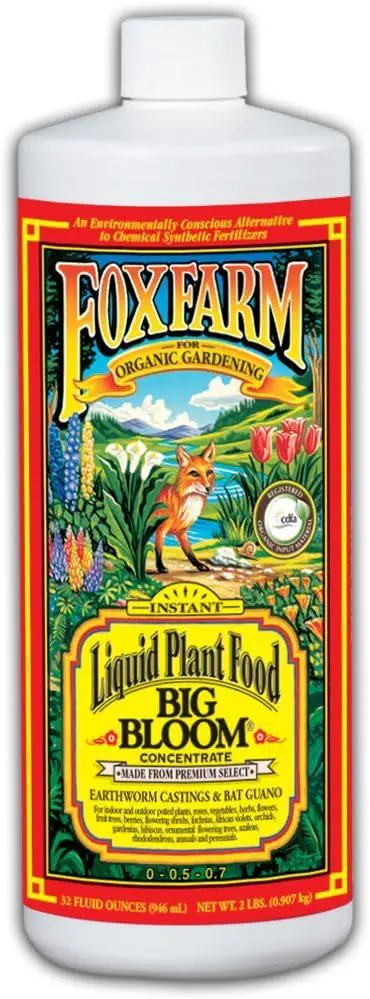
FoxFarm Big Bloom Liquid Fertilizer is a premium, high-phosphorus liquid fertilizer known for its effectiveness in promoting flowering and root development in a wide range of plants, including Monsteras.
This organic and natural formula has gained popularity among gardeners for its ability to enhance bloom production and overall plant vitality.
Key Features:
- High Phosphorus Content: Big Bloom is rich in phosphorus, a crucial nutrient for flowering plants. This elevated phosphorus level encourages robust root development and vigorous flowering.
- Organic and Natural Ingredients: The formula is derived from organic and natural sources, making it suitable for gardeners who prioritize organic and eco-conscious gardening practices.
- Versatility: While known for its benefits in promoting blooms, Big Bloom can be used throughout the entire plant’s life cycle, providing a well-rounded nutrient profile.
Benefits of Using FoxFarm Big Bloom Liquid Fertilizer:
- Promotes Flowering: The high phosphorus content in Big Bloom stimulates flower production and enhances the intensity of blooms, making it an excellent choice for plants like Monsteras that are known for their distinctive flowers.
- Encourages Strong Root Development: The enhanced phosphorus levels not only support flowering but also contribute to robust root systems, providing a solid foundation for overall plant health.
- Natural and Organic Approach: Made from natural and organic ingredients, Big Bloom aligns with eco-conscious gardening practices, making it a suitable choice for environmentally-conscious gardeners.
Customer Feedback and Reviews:
Gardeners who use FoxFarm Big Bloom Liquid Fertilizer often report impressive results, particularly in terms of increased flower production and overall plant vitality. Many users appreciate the natural and organic approach to plant nutrition.
5. Gaia Green All Purpose 4-4-4
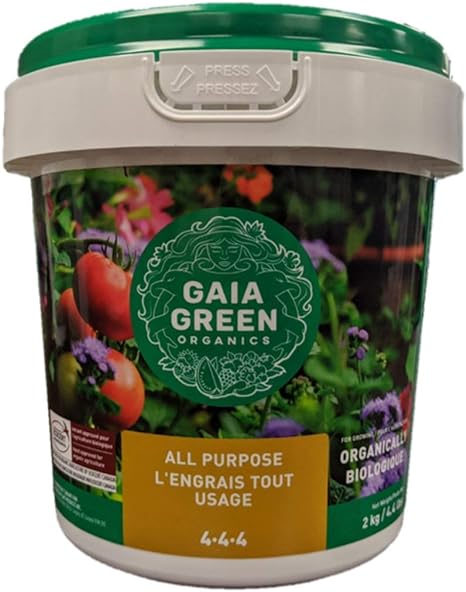
Gaia Green All Purpose 4-4-4 is a well-balanced, organic fertilizer renowned for its versatility and effectiveness in promoting healthy growth in a wide range of plants, including Monsteras.
This all-natural formulation has gained popularity among eco-conscious gardeners for its sustainable approach to plant nutrition.
Key Features:
- Balanced Nutrient Profile: With an NPK ratio of 4-4-4, this fertilizer provides an even distribution of essential nutrients, including nitrogen (N), phosphorus (P), and potassium (K), ensuring comprehensive support for plant growth.
- Organic and Sustainable: Gaia Green’s products are derived from natural and organic sources, making them an excellent choice for gardeners who prioritize eco-friendly and sustainable gardening practices.
- Slow-Release Formula: The slow-release nature of this fertilizer ensures a gradual and steady supply of nutrients over time, promoting consistent plant growth without the risk of over-fertilization.
Benefits of Using Gaia Green All Purpose 4-4-4:
- Promotes Balanced Growth: The even distribution of essential nutrients supports all aspects of plant development, from leafy growth to root establishment, contributing to overall plant vigor.
- Eco-Friendly Choice: Gaia Green’s commitment to organic and sustainable gardening aligns with the values of eco-conscious gardeners, providing a natural and environmentally-friendly option for plant nutrition.
- Steady Nutrient Supply: The slow-release formula ensures that plants receive a continuous and consistent supply of nutrients, reducing the risk of nutrient imbalances or over-fertilization.
Customer Feedback and Reviews:
Gardeners who use Gaia Green All Purpose 4-4-4 often report positive results, particularly in terms of improved plant health, vibrant foliage, and overall vitality.
Many users appreciate the natural and sustainable approach to plant nutrition.
6. Neptune’s Harvest Fish Emulsion
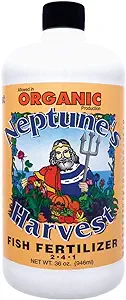
Neptune’s Harvest Fish Emulsion is a liquid fertilizer made from fish oil, known for its rich nutrient content and effectiveness in promoting healthy plant growth.
This organic and sustainable fertilizer has gained popularity among gardeners for its natural approach to plant nutrition.
Key Features:
- Natural and Organic Source: Derived from fish oil, this fertilizer is a natural and organic option for providing essential nutrients to plants. It aligns with the principles of eco-conscious and sustainable gardening practices.
- Rich in Nitrogen and Phosphorus: Neptune’s Harvest Fish Emulsion is notably high in nitrogen (N) and phosphorus (P), making it an excellent choice for promoting leafy growth, root development, and flowering in plants.
- Beneficial Microbes: In addition to nutrients, this fish emulsion contains beneficial microbes that can enhance soil health and promote overall plant vitality.
Benefits of Using Neptune’s Harvest Fish Emulsion:
- Promotes Lush Foliage: The high nitrogen content supports vigorous leafy growth, contributing to lush and vibrant foliage in plants.
- Enhances Root Development: The presence of phosphorus encourages strong root systems, providing a solid foundation for overall plant health and stability.
- Contributes to Flowering and Fruit Production: The balanced nutrient profile, including phosphorus, supports flowering and fruiting processes, leading to increased yields in fruit-bearing plants.
Customer Feedback and Reviews:
Gardeners who use Neptune’s Harvest Fish Emulsion often report positive results, particularly in terms of improved plant vigor, vibrant foliage, and increased flower and fruit production.
Many users appreciate the natural and organic approach to plant nutrition.
7. Worm Castings
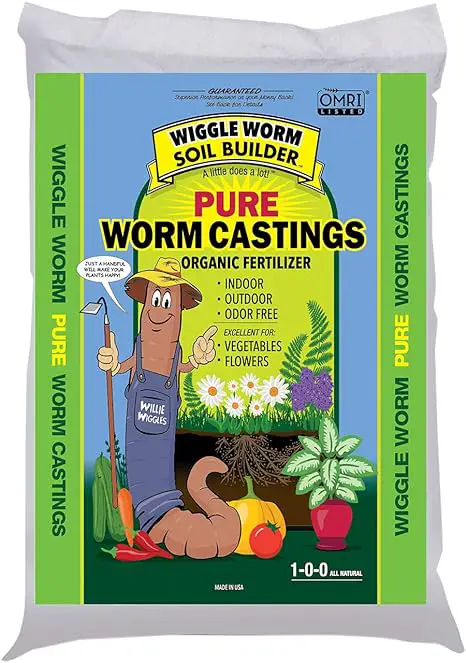
Worm castings, often referred to as “black gold,” are a nutrient-rich organic fertilizer made from the waste produced by earthworms.
These castings are highly regarded in gardening for their exceptional nutrient content and ability to enhance soil structure and microbial activity.
Key Features:
- Nutrient-Rich Composition: Worm castings are packed with essential nutrients, including nitrogen (N), phosphorus (P), and potassium (K), as well as various micronutrients. This makes them a potent natural fertilizer for plant growth.
- Beneficial Microbes: Worm castings are teeming with beneficial microorganisms that contribute to soil health and create a thriving environment for plant roots.
- Improves Soil Structure: The fine texture of worm castings helps improve soil structure, promoting better aeration and moisture retention, which is crucial for root health.
Benefits of Using Worm Castings:
- Enhances Nutrient Uptake: The balanced nutrient profile of worm castings provides plants with a readily available source of essential elements, supporting robust growth and development.
- Promotes Beneficial Soil Microbes: The presence of beneficial microorganisms in worm castings fosters a healthy soil ecosystem, aiding in nutrient cycling and disease suppression.
- Improves Soil Fertility: The addition of worm castings enriches the soil with organic matter and nutrients, creating an optimal environment for plants to thrive.
Application Methods:
- Top Dressing: Sprinkle a layer of worm castings on the soil surface around the base of your plant. Gently mix it into the top layer of soil.
- Mixing into Soil: Blend worm castings into potting soil or garden beds during planting or transplanting.
- Making Worm Casting Tea: Soak worm castings in water to create a nutrient-rich liquid fertilizer. This can be applied directly to the soil or used as a foliar spray.
Gardeners Feedback:
Gardeners who use worm castings often report significant improvements in plant growth, flowering, and overall vitality.
Many appreciate the natural and sustainable approach to plant nutrition that worm castings offer.
8. Compost

Compost is a nutrient-rich organic matter that results from the decomposition of kitchen and garden waste.
It is often referred to as “black gold” in gardening due to its exceptional ability to improve soil fertility and structure.
Key Features:
- Rich in Nutrients: Compost is a natural source of essential nutrients, including nitrogen (N), phosphorus (P), and potassium (K), along with various micronutrients. These nutrients are released slowly, providing a sustained source of nourishment for plants.
- Improves Soil Structure: The organic matter in compost helps improve soil structure by enhancing its ability to hold moisture, allowing for better aeration, and promoting the growth of beneficial soil organisms.
- Balances pH Levels: Compost has a neutral pH, which helps balance soil acidity or alkalinity, creating an optimal environment for plant roots.
Benefits of Using Compost:
- Enhances Soil Fertility: The nutrient-rich composition of compost enriches the soil, providing plants with a well-rounded source of essential elements for healthy growth.
- Increases Water Retention: The organic matter in compost helps the soil retain moisture, reducing the risk of drought stress for plants.
- Promotes Beneficial Soil Microbes: Compost is teeming with beneficial microorganisms that contribute to a thriving soil ecosystem, aiding in nutrient cycling and disease suppression.
Application Methods:
- Mixing into Soil: Blend compost into garden beds or potting soil during planting or transplanting to enrich the soil with nutrients and improve its structure.
- Top Dressing: Spread a layer of compost on the soil surface around the base of your plant. Gently mix it into the top layer of soil.
- Creating Compost Tea: Soak compost in water to create a nutrient-rich liquid fertilizer that can be applied directly to the soil or used as a foliar spray.
Gardeners Feedback:
Gardeners who use compost often report significant improvements in plant health, growth, and overall garden vitality.
Many appreciate the natural and sustainable approach to soil enrichment that compost provides.
9. Coffee Grounds as Fertilizer
Coffee grounds, often considered waste, can be repurposed as a valuable and nutrient-rich fertilizer for plants.
They are an excellent source of organic matter and can provide essential nutrients to support plant growth.
Key Features:
- Rich in Nitrogen: Coffee grounds are a good source of nitrogen (N), which is crucial for promoting leafy growth and vibrant foliage in plants.
- Improves Soil Texture: When incorporated into soil, coffee grounds can help improve soil structure by enhancing its ability to retain moisture and nutrients.
- Acidic pH: Coffee grounds have a slightly acidic pH, which can benefit plants that thrive in acidic soil conditions.
Benefits of Using Coffee Grounds:
- Boosts Nitrogen Levels: The nitrogen content in coffee grounds can provide a significant boost to plants, particularly those that have a higher demand for this nutrient.
- Enhances Soil Aeration: When mixed into the soil, coffee grounds can help improve aeration, allowing plant roots to access oxygen more effectively.
- Repurposes Kitchen Waste: Using coffee grounds as fertilizer is an eco-friendly way to repurpose kitchen waste and contribute to sustainable gardening practices.
Application Methods:
- Mixing into Soil: Blend coffee grounds into potting soil or garden beds during planting or transplanting to enrich the soil with nutrients.
- Top Dressing: Apply a layer of coffee grounds on the soil surface around the base of your plant. Gently mix them into the top layer of soil.
- Creating Coffee Grounds Tea: Soak coffee grounds in water to create a nutrient-rich liquid fertilizer that can be applied directly to the soil or used as a foliar spray.
Caution:
While coffee grounds offer numerous benefits, it’s important to use them in moderation. Excessive use of coffee grounds, especially in their fresh and undecomposed form, can lead to over-acidification of the soil.
Gardeners Feedback:
Gardeners who use coffee grounds as fertilizer often report positive results, particularly in terms of improved plant vigor, vibrant foliage, and overall vitality.
Many appreciate the cost-effective and sustainable approach to plant nutrition that coffee grounds offer.
10. Eggshells as Fertilizer
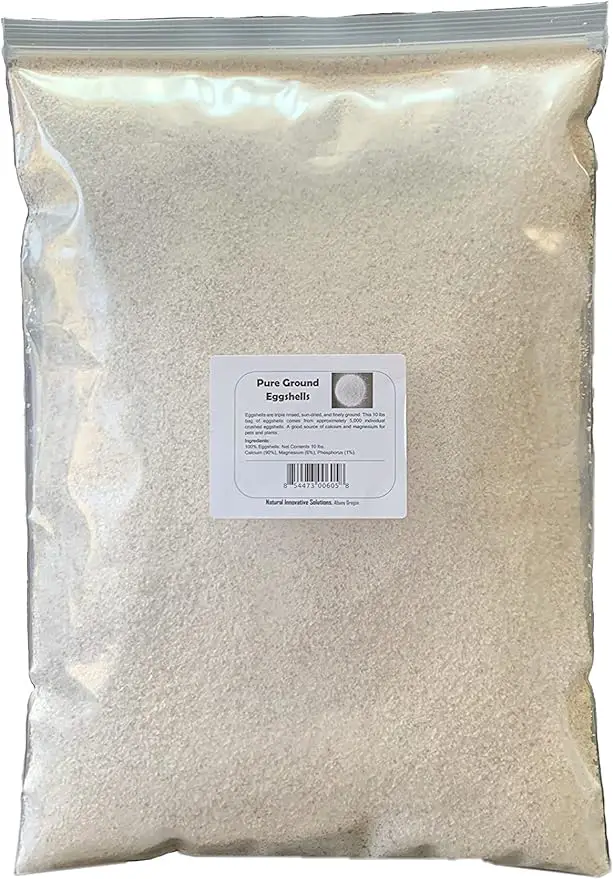
Eggshells are a readily available kitchen waste that can be repurposed as a natural and nutrient-rich fertilizer for plants.
They are a valuable source of calcium and other essential minerals that can benefit plant growth.
Key Features:
- Rich in Calcium: Eggshells are predominantly composed of calcium carbonate, making them an excellent source of calcium (Ca), which is essential for strong cell walls in plants.
- Micronutrient Content: In addition to calcium, eggshells contain small amounts of other minerals like magnesium, potassium, and phosphorus, which can contribute to overall plant health.
- Improves Soil Structure: When crushed and incorporated into soil, eggshells can help improve soil structure and promote better drainage.
Benefits of Using Eggshells:
- Strengthens Plant Cell Walls: The calcium content in eggshells is crucial for building and maintaining strong and resilient cell walls in plants.
- Prevents Calcium Deficiency: Regular application of eggshells can help prevent calcium deficiency-related issues, such as blossom end rot in tomatoes.
- Repurposes Kitchen Waste: Using eggshells as fertilizer is an eco-friendly way to repurpose kitchen waste and contribute to sustainable gardening practices.
Application Methods:
- Crushed Eggshells: Crush eggshells into small pieces and sprinkle them directly onto the soil around the base of your plants. Gently mix them into the top layer of soil.
- Eggshell Powder: Grind eggshells into a fine powder using a blender or mortar and pestle. This powder can be mixed into potting soil or garden beds during planting.
- Eggshell Tea: Soak crushed eggshells in water to create a calcium-rich liquid fertilizer that can be applied directly to the soil or used as a foliar spray.
Caution:
It’s important to crush or grind eggshells thoroughly to facilitate decomposition. This ensures that the nutrients become accessible to plant roots.
Gardeners Feedback:
Gardeners who use eggshells as fertilizer often report positive results, particularly in terms of stronger and healthier plants. Many appreciate the natural and sustainable approach to plant nutrition that eggshells offer.
NPK Ratio in Monstera Fertilizer
Monstera plants prefer a fertilizer with a balanced ratio of nitrogen (N), phosphorus (P), and potassium (K), with an NPK ratio of around 3:1:2. This ratio provides the essential nutrients that Monsteras need for healthy growth and development.
Of all the fertilizers we listed with NPK, Miracle-Gro Monstera Plant Food is the closest to a balanced ratio for Monsteras, with an NPK ratio of approximately 3:1:2.
Gaia Green All Purpose 4-4-4 has an equal ratio of N, P, and K, which is not ideal for Monsteras, as they require more nitrogen than phosphorus and potassium.
Espoma Organic Orchid Plant Food has an NPK ratio of 1-3-1, which is too high in phosphorus and too low in nitrogen for Monsteras.
Therefore, I would recommend using Miracle-Gro Monstera Plant Food for your Monstera plant. It is specifically designed for Monsteras and provides the balanced ratio of nutrients that they need to thrive.
If you are not using an NPK ratio of 3:1:2 fertilizer, you do not need to avoid it, but you should be aware of their NPK ratios and adjust your fertilization schedule accordingly. For example, if you use Gaia Green All Purpose 4-4-4, you may need to fertilize your Monstera more often, as it needs more nitrogen than phosphorus and potassium.
When and How to Fertilize
Knowing the right time and method for fertilizing your Monstera is crucial for its optimal growth and health. Let’s dive into the details of when and how to apply fertilizer effectively.
Frequency and Timing
Frequency of Fertilization:
During the growing season, which spans from spring to fall, your Monstera is in active growth mode. This is when it requires a regular supply of nutrients.
Aim to fertilize every two to four weeks, providing a consistent source of essential elements for robust development.
Dormant Season:
In contrast, during the dormant period in winter, your Monstera’s growth slows down. As a result, it requires fewer nutrients. Reduce the frequency of fertilization to allow the plant to rest.
Methods of Application
Top-Dressing:
Granular fertilizers can be applied as a top-dressing. Simply sprinkle the recommended amount evenly on the soil surface around the base of the plant. Afterward, water thoroughly to ensure the nutrients reach the roots.
Liquid Application:
Liquid fertilizers are easily dissolved in water and can be applied directly to the soil. Follow the instructions on the package to achieve the correct dilution. Water your Monstera with the solution, making sure to saturate the soil.
Foliar Feeding:
This method involves applying a diluted fertilizer solution directly onto the leaves of your Monstera. Use a spray bottle to mist the solution evenly across the foliage. This allows the plant to absorb nutrients through its leaves.
Signs of Overfertilization
While providing nutrients is essential, it’s equally crucial to avoid overdoing it. Overfertilization can lead to nutrient burn, where excessive salts in the soil can damage the roots and foliage.
Signs of Overfertilization:
- Brown, crispy edges on the leaves
- Wilting or drooping foliage
- Browning or yellowing of leaves
- Stunted growth or abnormal appearance
If you notice any of these signs, it’s imperative to take action promptly.
- Stop Fertilizing: Immediately discontinue fertilization to prevent further damage.
- Flush the Soil: Water your Monstera thoroughly to leach out excess salts. Allow water to drain freely from the bottom of the pot.
- Monitor Growth: Keep a close eye on your plant’s progress. Once it shows signs of recovery, resume a balanced fertilization schedule.
By understanding when and how to fertilize your Monstera, you’re equipping yourself with the knowledge to provide the right nutrients at the right time.
This ensures your plant receives the optimal support for healthy, vibrant growth. Remember, consistency and attentiveness are key to successful fertilization.
Choosing the Right Fertilizer for Your Monstera
Selecting the appropriate fertilizer is a pivotal step in ensuring your Monstera thrives. Understanding how to interpret fertilizer labels and recognizing specialty formulations for variegated Monsteras can make a significant difference in your plant’s overall health.
1. Reading Fertilizer Labels
When perusing fertilizer options, decoding the information on the label is crucial. Here’s what to look for:
N-P-K:
This trio of numbers, such as 10-10-10 or 3-1-2, represents the relative proportions of Nitrogen (N), Phosphorus (P), and Potassium (K) in the fertilizer.
- Nitrogen (N): Promotes leafy growth.
- Phosphorus (P): Fosters root development and flowering.
- Potassium (K): Enhances overall plant health and structure.
As we mentioned before, select a fertilizer with a balanced N-P-K ratio, such as 3:1:2, for well-rounded support.
Additional Nutrients:
Some fertilizers may contain secondary and micronutrients like calcium, magnesium, iron, and others. These can be beneficial for addressing specific nutrient deficiencies in your Monstera.
Application Guidelines:
The label will provide instructions on how to mix and apply the fertilizer. Follow these recommendations closely to avoid over or under-fertilizing.
2. Specialty Fertilizers for Variegated Monstera
Variegated Monsteras, with their distinctive white or yellow marbled patterns, have unique nutrient requirements. Specialty fertilizers catered to these specific needs can be beneficial:
- Enhanced Micronutrient Formulas: Variegated Monsteras may benefit from fertilizers that contain a broader range of micronutrients. Look for formulations that explicitly mention micronutrient content.
- Phosphorus-Rich Blends: Since variegated Monsteras tend to have more demanding growth patterns, a fertilizer with a slightly higher phosphorus content can aid in root development and overall plant vigor.
- Balanced N-P-K Ratios: While the emphasis may be on phosphorus, it’s still essential to provide a balanced nutrient profile. Opt for a fertilizer with a slightly elevated middle number in the N-P-K ratio.
By paying attention to fertilizer labels and considering the specialized needs of variegated Monsteras, you can ensure your plant receives the precise nutrients it requires for healthy, vibrant growth.
Remember to monitor your plant’s progress and adjust your fertilization routine as needed to maintain optimal health and vitality.
Advanced Fertilizing Techniques
Taking your Monstera’s care to the next level involves employing advanced fertilizing techniques. These methods can provide targeted and efficient nutrient delivery, ensuring your plant reaches its full potential.
Let’s explore these techniques in detail.
1. Foliar Feeding: A Supplemental Boost
Foliar feeding involves applying a diluted fertilizer solution directly onto the leaves of your Monstera. This method allows the plant to absorb nutrients through its foliage, providing a quick and efficient nutrient boost.
Advantages of Foliar Feeding:
- Rapid Absorption: Nutrients are absorbed directly through the leaves, bypassing the root system and providing a quick boost.
- Effective for Troubled Roots: In cases where the root system may be compromised, foliar feeding can be a lifeline for nutrient uptake.
How to Foliar Feed:
- Choose a balanced, water-soluble fertilizer suitable for foliar application.
- Dilute the fertilizer according to the manufacturer’s instructions.
- Using a spray bottle, mist the diluted solution evenly across the surface of your Monstera’s leaves, ensuring both sides are covered.
- Perform foliar feeding in the morning or early evening to avoid direct sunlight, which can cause leaf burn.
2. Root Drenching: Maximizing Absorption
Root drenching involves saturating the soil with a diluted fertilizer solution, allowing the roots to absorb nutrients directly. This method ensures that the entire root system receives an ample supply of essential elements.
Advantages of Root Drenching:
- Targeted Nutrient Delivery: By applying the fertilizer directly to the root zone, you ensure efficient absorption.
- Prevents Nutrient Runoff: Unlike surface applications, root drenching minimizes the risk of nutrients leaching out of the soil.
How to Root Drench:
- Choose a balanced, water-soluble fertilizer suitable for root drenching.
- Dilute the fertilizer according to the manufacturer’s instructions.
- Pour the diluted solution slowly and evenly onto the soil around the base of your Monstera, ensuring complete coverage.
- Allow excess water to drain out from the bottom of the pot.
3. Fertilizing in Different Growth Phases
Adjusting your fertilization approach based on the specific growth phase of your Monstera is crucial for providing the right nutrients at the right time.
- Rapid Growth Phase (Spring and Early Summer): During periods of vigorous growth, increase the frequency of fertilization to support the plant’s increased metabolic activity.
- Dormant Phase (Fall and Winter): As your Monstera enters its dormant phase, reduce the frequency of fertilization. The plant’s growth slows, and it requires fewer nutrients.
By incorporating these advanced fertilizing techniques, you can fine-tune your approach to meet the specific needs of your Monstera plant.
Whether it’s providing a quick nutrient boost through foliar feeding or ensuring efficient absorption with root drenching, these methods can elevate your plant’s overall health and vitality.
Remember to observe your Monstera’s response and adjust your fertilization routine accordingly.
Troubleshooting Fertilizer-Related Issues
While fertilizing your Monstera is crucial for its overall health and growth, it’s important to be vigilant for signs of potential issues.
Here’s how to identify and address common problems related to fertilization.
1. Burned Leaves: Signs of Overfertilization
Symptoms:
- Brown, crispy edges on the leaves.
- Yellowing or browning of leaf tips or margins.
Causes:
- Excessive salts in the soil due to overfertilization.
Solution:
- Stop Fertilizing: Immediately discontinue fertilization to prevent further damage.
- Flush the Soil: Water your Monstera thoroughly to leach out excess salts. Allow water to drain freely from the bottom of the pot.
- Monitor Growth: Keep a close eye on your plant’s progress. Once it shows signs of recovery, resume a balanced fertilization schedule.
2. Yellowing Leaves: Nutrient Deficiencies
Symptoms:
- Overall yellowing of leaves, often starting with older, lower leaves.
- Stunted growth.
Causes:
- Insufficient or unbalanced nutrient supply.
Solution:
- Adjust Fertilization: Ensure you’re using a balanced fertilizer with the appropriate N-P-K ratio for your Monstera.
- Monitor Soil pH: Check the pH of your soil. Some nutrient deficiencies can be linked to pH levels that are too high or too low. Adjust accordingly.
- Consider Micronutrient Supplements: If specific nutrient deficiencies are suspected, consider using a fertilizer with additional micronutrients or applying specific supplements.
3. Adjusting pH Levels for Optimal Absorption
Symptoms:
- Stunted growth.
- Yellowing leaves.
Causes:
- Incorrect pH levels in the soil, affecting nutrient availability.
Solution:
- Test Soil pH: Use a soil pH testing kit to determine the current pH level.
- Adjust pH as Needed: If the pH is too high (alkaline), consider adding acidic amendments like elemental sulfur or organic matter. If it’s too low (acidic), consider adding lime or other alkaline substances.
- Monitor and Maintain: Regularly test and adjust the pH as needed to ensure optimal nutrient absorption.
By troubleshooting and addressing these common fertilizer-related issues, you’ll be able to provide the best possible care for your Monstera.
Fertilizing for Propagation and Blooms
Tailoring your fertilization routine to cater to specific stages of your Monstera’s growth cycle is essential for promoting successful propagation and encouraging vibrant blooms.
Fertilizing for Propagation
When propagating your Monstera, whether through stem cuttings or other methods, providing the right nutrients is crucial for establishing healthy roots and promoting robust growth.
- Choose a Balanced Fertilizer: Opt for a balanced fertilizer with an NPK ratio of around 3:1:2. This will provide the essential nutrients needed for both leafy growth and root development.
- Dilute the Fertilizer: When propagating in a water-based medium or using a water propagation method, dilute the fertilizer to half strength. This prevents over-fertilization while still providing the necessary nutrients.
- Apply During Active Growth: Start fertilizing once the cutting has established roots and is showing signs of active growth. This is typically a few weeks after propagation.
Fertilizing for Blooms
Encouraging your Monstera to produce beautiful blooms involves providing the right nutrients, particularly an ample supply of phosphorus.
- Choose a Phosphorus-Rich Fertilizer: Look for a fertilizer with a higher phosphorus content to support flowering. A formulation with a higher middle number in the NPK ratio, such as 5-10-5, can be beneficial.
- Apply Before Blooming Season: Begin increasing the frequency of fertilization with a phosphorus-rich fertilizer a few weeks before the expected blooming season. This provides the plant with the necessary nutrients to support flower production.
- Monitor Progress: Keep a close eye on your Monstera’s progress. Once blooming begins, continue the increased fertilization routine until the end of the flowering period.
By adjusting your fertilization approach to cater to propagation and blooming stages, you’re ensuring that your Monstera receives the precise nutrients it needs for successful growth and reproduction.
Remember to monitor your plant’s progress and adjust your fertilization routine as needed to support these specific stages of its lifecycle.
Seasonal Considerations
Understanding how the changing seasons impact your Monstera’s growth and nutrient needs is key to providing the best care.
Here’s how to adjust your fertilization routine based on seasonal shifts.
1. Fertilizing in Spring
As spring arrives, your Monstera enters its active growth phase. This is a crucial time to provide ample nutrients to support its increased metabolic activity.
- Increase Frequency: Boost your fertilization schedule to every two to three weeks.
- Monitor Growth: Keep an eye on your plant’s progress. If you notice signs of rapid growth, consider increasing the frequency of fertilization.
2. Adjusting for Winter Dormancy
As winter approaches, your Monstera will naturally enter a dormant phase. During this time, its growth slows, and it requires fewer nutrients.
- Reduce Frequency: Cut back on fertilization. Instead of every two weeks, consider fertilizing once a month or even less frequently.
- Monitor Soil Moisture: Be cautious not to overwater during this period, as the plant’s reduced metabolic activity means it absorbs water and nutrients more slowly.
By tailoring your fertilization routine to the seasonal needs of your Monstera, you’re providing targeted care that supports its natural growth patterns.
This ensures your plant receives the right nutrients at the right times, promoting optimal health and vitality.
Environmental Factors and Fertilizer
The environment in which your Monstera resides plays a significant role in its nutrient uptake and overall health.
Understanding how specific factors like light levels and humidity impact fertilization can help you provide the best care for your plant.
1. Light Levels and Fertilization
High Light Environments:
In areas with ample natural light, your Monstera may exhibit more vigorous growth. This increased metabolic activity requires a higher nutrient supply.
Consider slightly elevating the frequency of fertilization to support this enhanced growth.
Low Light Environments:
In lower light conditions, your Monstera’s growth may be slower. Consequently, it requires fewer nutrients. Adjust your fertilization routine accordingly, reducing the frequency to prevent over-fertilization.
2. Humidity and its Impact on Nutrient Uptake
High Humidity:
In environments with high humidity, your Monstera’s transpiration rate may be lower. This means it absorbs nutrients at a slower pace.
Monitor soil moisture levels and adjust your fertilization routine to prevent nutrient buildup.
Low Humidity:
In drier conditions, your Monstera may experience higher transpiration rates, resulting in increased nutrient absorption.
Keep an eye on soil moisture levels and consider more frequent but lighter applications of fertilizer.
By considering the specific environmental conditions your Monstera experiences, you can fine-tune your fertilization routine to meet its unique needs.
This ensures your plant receives the right nutrients in the right amounts, promoting optimal health and growth. Remember, flexibility and attentiveness are key to providing the best care for your Monstera.
FAQs:
How often to fertilize Monstera?
The frequency of fertilizing your Monstera depends on the type of fertilizer you use. For most balanced liquid fertilizers, it’s recommended to fertilize every two weeks during the growing season (spring to fall).
However, during the dormant season (winter), reduce fertilization to once a month or even less. Always follow the instructions on the specific fertilizer product for best results.
How to fertilize Monstera?
To fertilize your Monstera, follow these steps:
- Dilute the Fertilizer: Mix the recommended amount of fertilizer with water according to the instructions on the label. It’s important not to use undiluted fertilizer, as it can harm the plant.
- Water Deeply: Water your Monstera thoroughly before applying the fertilizer. This helps prevent root burn and ensures that the nutrients are evenly distributed.
- Apply the Fertilizer: Pour the diluted fertilizer over the soil around the base of the plant. Make sure to avoid getting the fertilizer on the leaves, as this can cause leaf burn.
When to fertilize Monstera?
Fertilize your Monstera during the growing season, which is typically from spring to fall.
This is when the plant is actively growing and can make the most use of the nutrients provided by the fertilizer.
Avoid fertilizing during the dormant season (winter) as the plant’s growth slows down.
What fertilizer is best for Monstera?
The best fertilizer for Monstera is a balanced, water-soluble fertilizer with an NPK ratio of around 3:1:2.
Look for a fertilizer that contains essential macronutrients: nitrogen (N) for leaf growth, phosphorus (P) for root development and flowering, and potassium (K) for overall plant health.
Can I use orchid fertilizer on Monstera?
Yes, you can use orchid fertilizer on Monstera, but it’s important to check the NPK ratio.
Orchids typically require a fertilizer with higher phosphorus content to promote flowering, so if you choose to use orchid fertilizer on your Monstera, make sure it has a balanced ratio suitable for general plant growth (around 3:1:2).
Do Monsteras need fertilizer?
Yes, Monsteras do benefit from regular fertilization. Providing the right balance of nutrients helps support healthy growth, strong root development, and vibrant foliage.
However, it’s crucial to avoid over-fertilizing, as this can lead to nutrient burn and other issues. Following a balanced fertilization routine tailored to your Monstera’s specific needs is key to its overall well-being.
Conclusion
So, what is the best fertilizer for Monstera? The ideal choice is a balanced, water-soluble fertilizer with an NPK ratio around 3:1:2, providing the essential trio of nitrogen, phosphorus, and potassium.
This balanced blend supports lush leaf growth, robust root development, and overall plant vitality.
Remember, the key to successful Monstera care lies in moderation. Fertilize during the active growing season, from spring to fall, and taper off during winter.
Dilute the fertilizer as instructed and water thoroughly to ensure even distribution of nutrients.
Considering various options, Monstera Plant Food by Miracle-Gro, Jack’s Classic All-Purpose Fertilizer, and Espoma Organic Orchid Plant Food stand out for their balanced nutrient profiles.
FoxFarm Big Bloom Liquid Fertilizer, with its high phosphorus content, is excellent for flowering and root growth.
For those leaning towards organic options, Gaia Green All Purpose 4-4-4 and Neptune’s Harvest Fish Emulsion provide sustainable choices.
Worm castings, compost, coffee grounds, and eggshells offer natural alternatives, enriching the soil and fostering a thriving environment for your Monstera.
Each of these options has its unique strengths, from providing essential nutrients to improving soil structure.
In conclusion, choosing the right fertilizer and using it judiciously is a cornerstone of Monstera care. By tailoring your approach to your plant’s specific needs, you’re setting the stage for a flourishing and vibrant Monstera in your home. Happy gardening!

